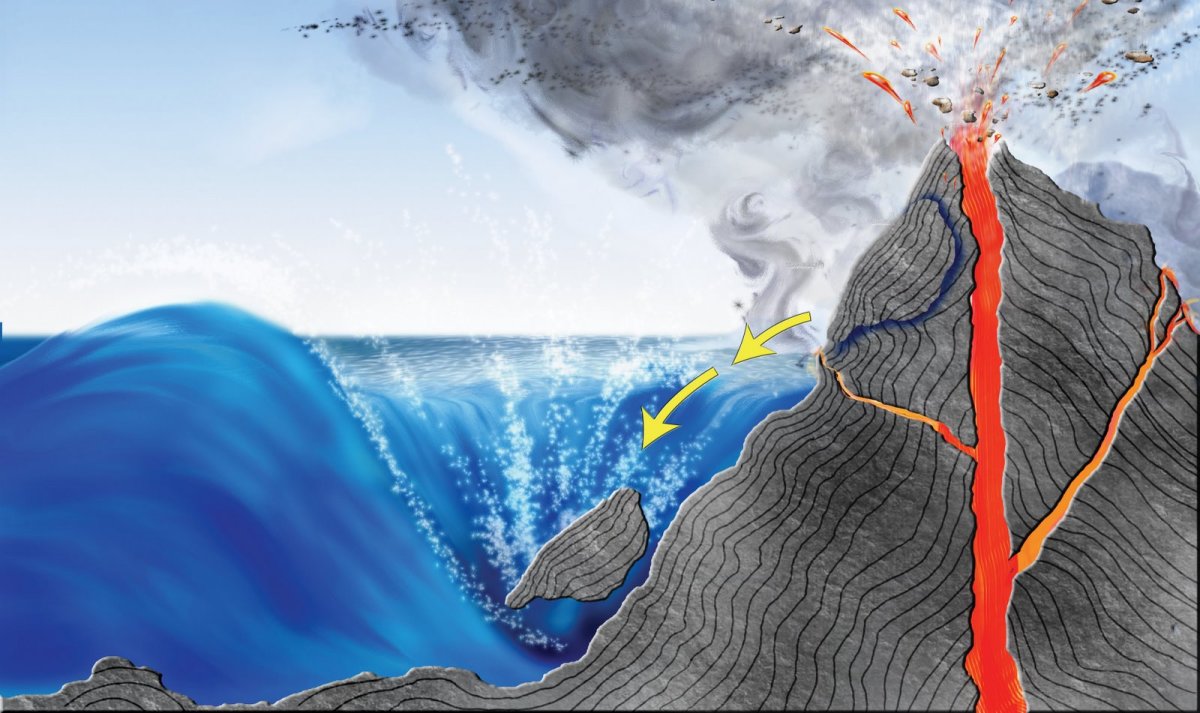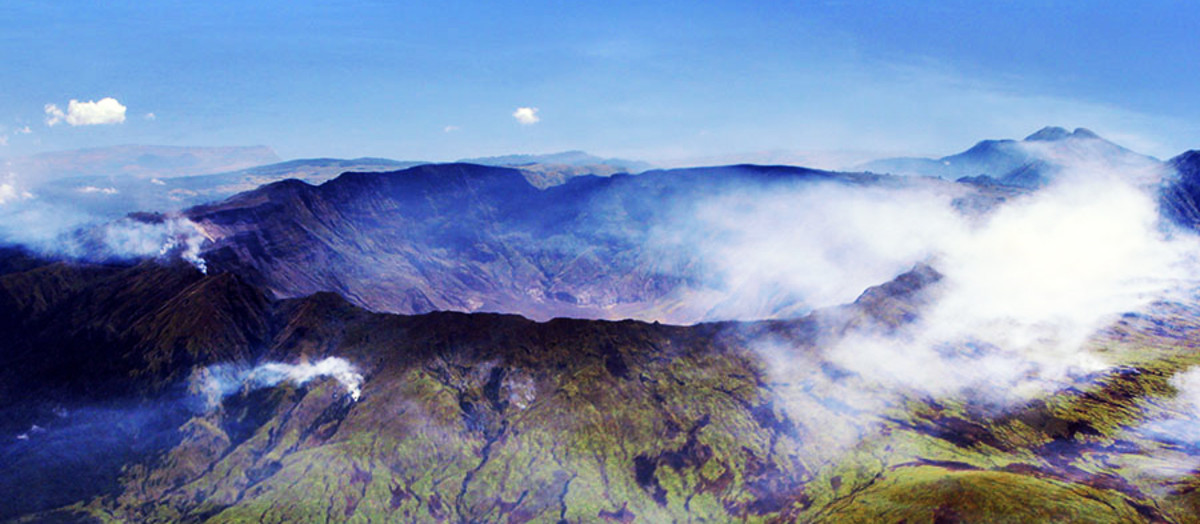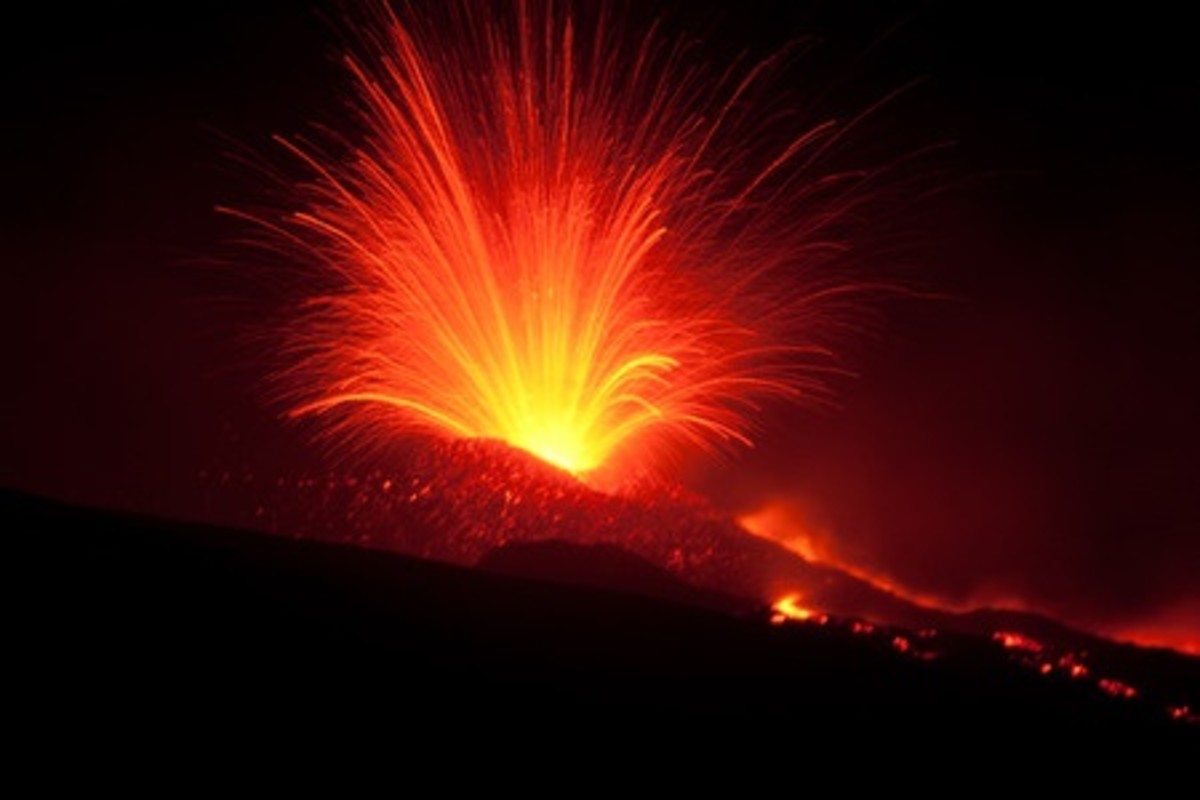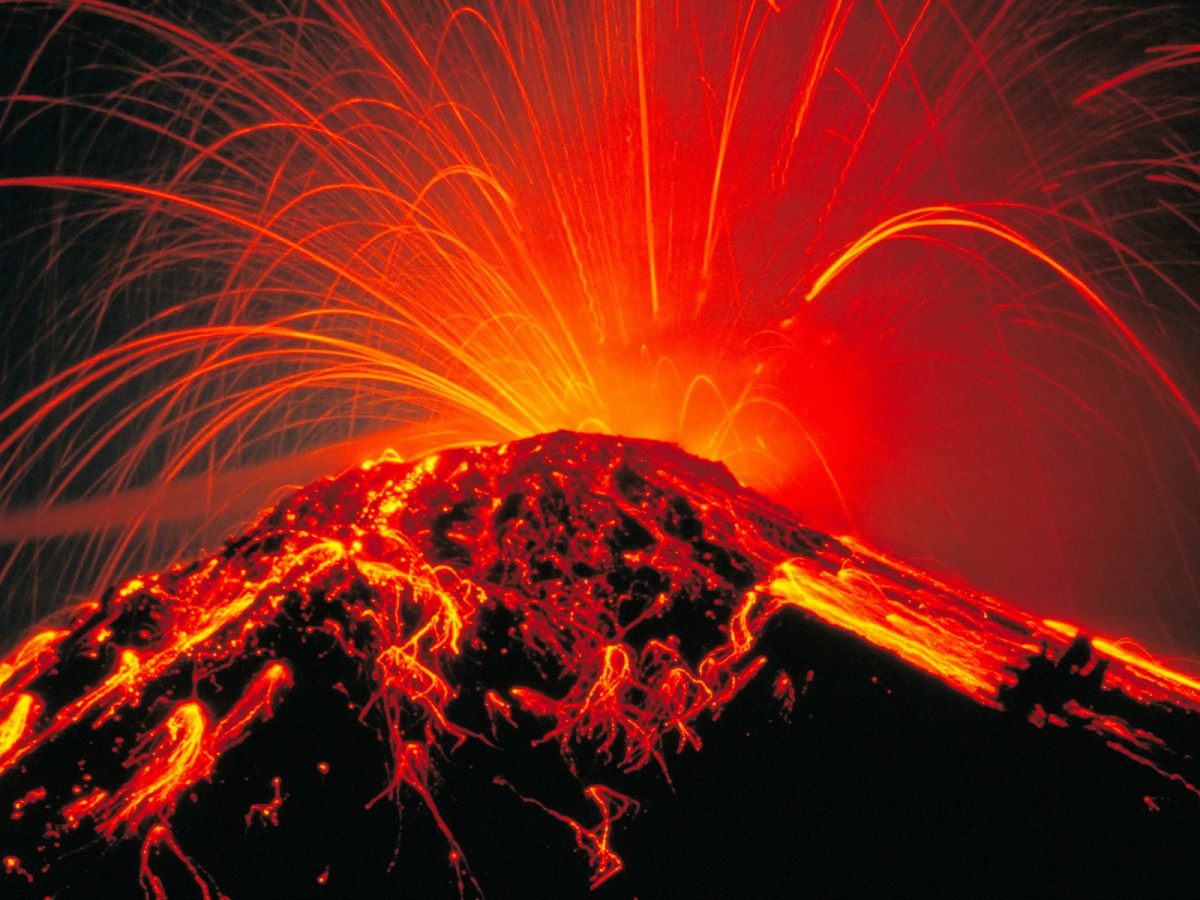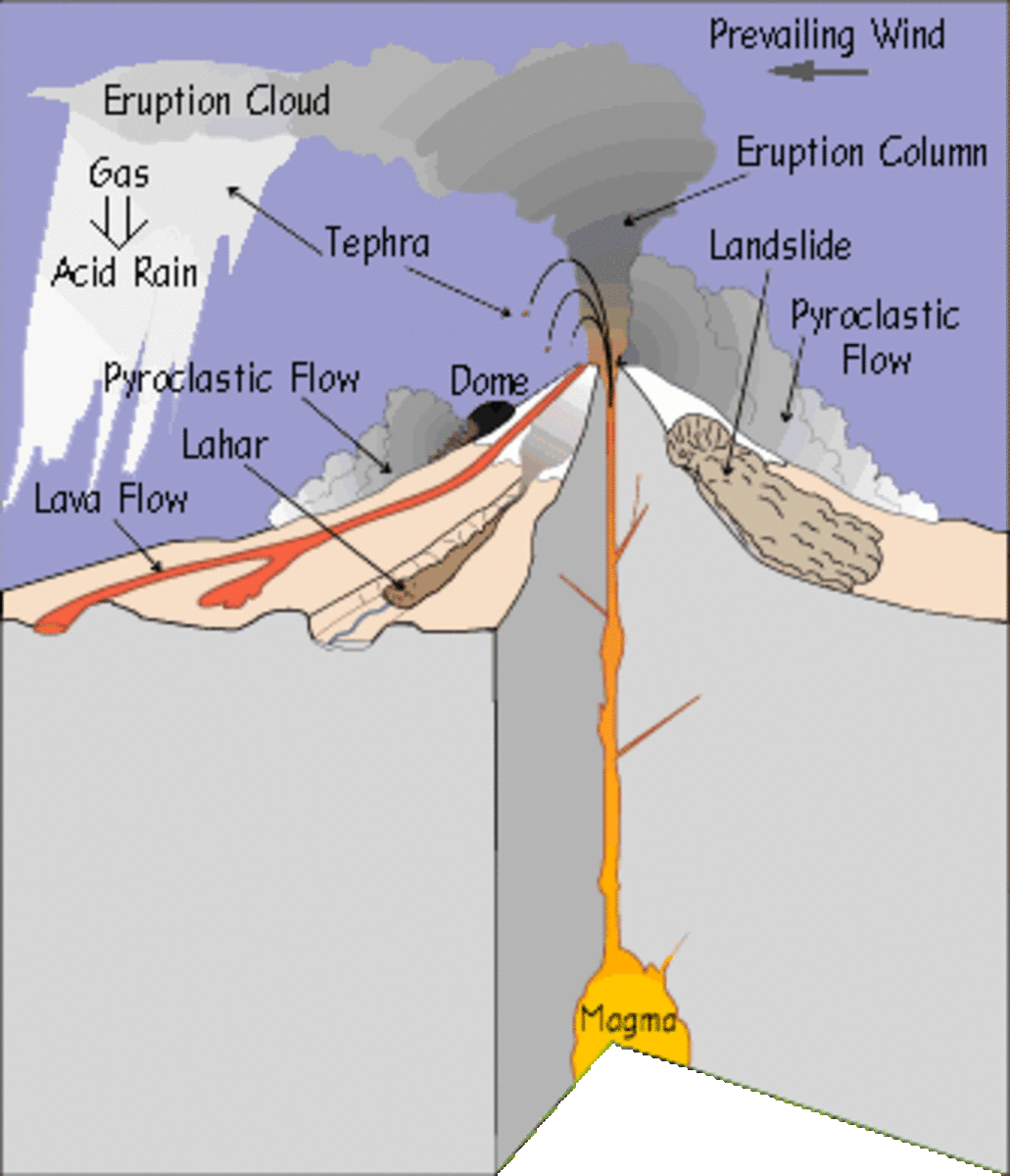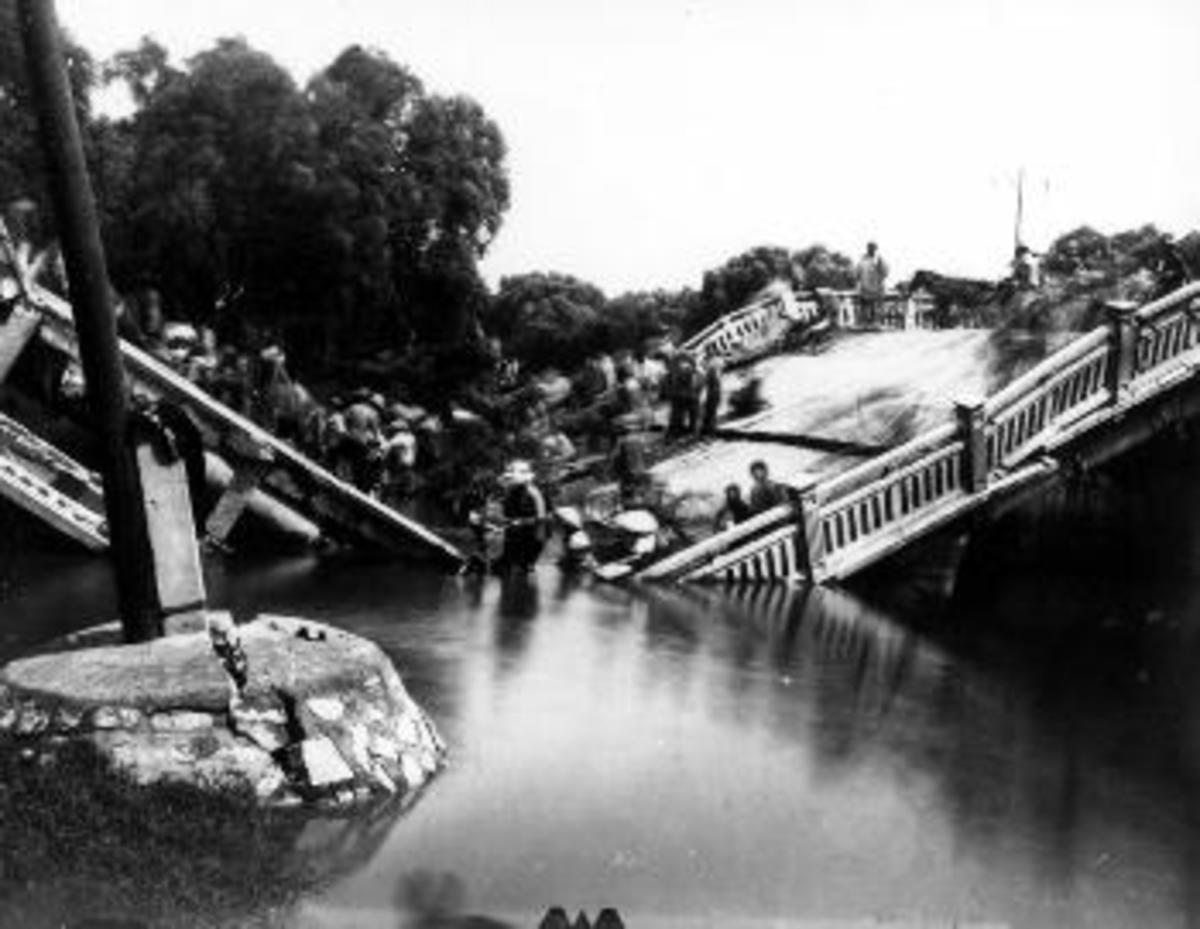The Pacific Ring of Fire - Most Volcanic Eruptions and Earthquakes Happen Here
The Pacific Ring of Fire

The Pacific Ring of Fire is an area in the Pacific Ocean shaped like a horseshoe and occupying an area of about 25,000 miles (40,000 kms.).
It passes through several countries and major cities where most of the world’s major earthquakes and volcanic eruptions have occurred.
It is also called the circum-Pacific belt or the circum-Pacific seismic belt.
These places within the ring of fire include the western portions of North, South and Central America, the Aleutian Islands, Japan, the Philippines, Indonesia, the Marianas Islands, Tonga, Bougainville and New Zealand.
The area most prone to earthquakes -- where 5 to 6 percent of earthquakes and 17 percent of the world's worst earthquakes occur -- is the Alpide Belt, the area that stretches from Java to Sumatra in Indonesia, passing through the Himalayan mountains, into the Mediterranean region, up to the Atlantic Ocean.
7.3 magnitude earthquake that hit Bohol, Philippines on October 15, 2013

In Japan, tremors are daily occurrences which cause houses, buildings and other structures to shake. This can be attributed to the fact that Japan is home to 10 percent of the world’s most active volcanoes.
There are about 1,500 earthquakes that occur in Japan every month including undersea earthquakes that threaten some parts of the country with strong tsunamis. These daily earthquakes have been part of the Japanese people’s way of life.
They have, in fact, designed their buildings in such as a way that they will be able to withstand these daily tremors and even the stronger ones that could happen in the future.
In North America, 20 major volcanoes can be found in the western United States in an area called the Cascade Volcanic Arc which stretches from the southwestern part of British Columbia passing through Washington state, and Oregon to northern California.
The presence of these million-year old volcanoes has produced a fault line measuring 680 miles that stretches from northern California to Vancouver Island in British Columbia.
In Canada, the province of British Columbia and the Yukon Territories are hosts to a number of dormant volcanoes which, geologists say, could erupt anytime. The area called the Northern Cordillera Volcanic Province is where the most active volcanoes can be found in Canada.
In the Kamkatcha Peninsula in the far eastern side of Russia are found hundreds of extinct and dormant volcanoes, about 30 of them are active. Mexico is also home to active volcanoes which happen at the Trans-Mexican Volcanic Belt.
The most active of these volcanoes is the Popocatepetl which has erupted more than 20 times in the past killing thousands of people.
Mt. Pinatubo eruption, June 1991

The Philippines is also known for strong earthquakes, one of which happened in July 1990 and devastated major cities like Baguio, Nueva Ecija and other parts of Central Luzon, and volcanic eruptions, the most famous of which was the eruption of Mt. Pinatubo in 1991.
Indonesia is also home to active volcanoes, one of which is Krakatoa which erupted in 1883.
Another strong earthquake which registered a magnitude 7.3 on the Richter scale badly hit the provinces of Bohol and Cebu on October 15, 2013 destroying hundred-old churches, business establishments and housing structures and brought fear and panic to residents of those areas.
New Zealand is also home to both many volcanoes in an area called the Taupo Volcanic Zone. To complete the list of places within the ring of fire is the Antarctic region.
Antarctica is also known for many active volcanoes, the most famous of which is Mt. Erebus, found in the southernmost tip of the globe.
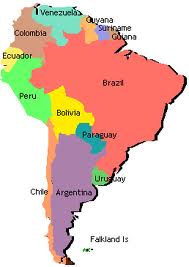
South America, Chile and Bolivia are the countries that have the most number of volcanoes.
The Valdivia Earthquake that happened in Chile in 1960 is considered the world’s largest earthquake, so far, in terms of magnitude and number of fatalities.
Bolivia has its own share of both extinct and active volcanoes found on the western side of Bolivia in a place called the Cordillera Occidental. These volcanoes are classified international mountain ranges shared with Chile.
© 2012 Zee Formadero

